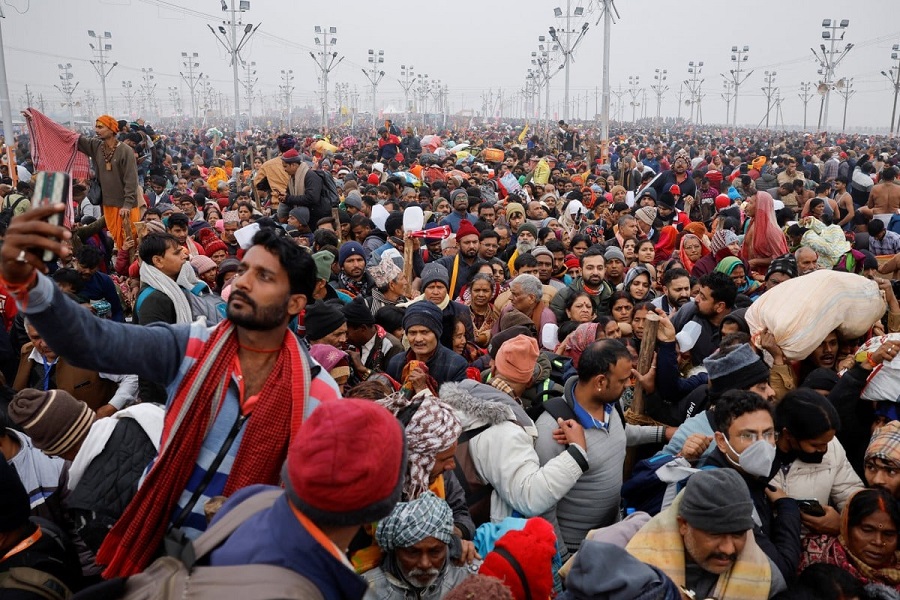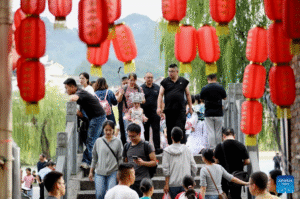Maha Kumbh Mela begins , festival attracts more than 400 million visitors

Prayagraj , India ( REUTERS) : Nearly 15 million Hindus, six times the number expected, took a dip in freezing waters seeking absolution of their sins on the first day of a six-week festival in India expected to draw the world’s largest gathering of humanity.
They sought absolution of their sins by immersing themselves at the confluence of sacred rivers.
Held every 12 years, the Maha Kumbh Mela, or Great Pitcher Festival, as the religious event in the city of Prayagraj in the northern state of Uttar Pradesh is called, attracts more than 400 million visitors, both Indians and tourists.
Officials had expected the first ritual dip to draw 2.5 million visitors.
As many as 40,000 police officers are on guard to provide security and help manage the crowds, while surveillance cameras equipped with artificial intelligence capabilities will ensure continuous monitoring.
“It is our festival,” said ascetic Hazari Lala Mishra, who immersed himself before sunrise, which is considered an auspicious time, on January 13.
“(It is) the only festival for hermits and monks, and we wait for it desperately.”
Authorities expected the first ritual dip to draw more than 2.5 million visitors, followed by a “royal bath” on January 14 – reserved for ascetics in the belief that it absolves them of sin and confers salvation from the cycle of life and death.
Amid public warnings to walk in lines without halting anywhere, droves of marchers headed for bathing positions to await sunrise at the confluence of the three holy rivers, the Ganga, Yamuna, and the mythical, invisible Saraswati.
Advancing towards the waters’ edge in the winter morning fog, they chanted invocations in praise of the Hindu deities Lord Shiva and Mother Ganga, who personifies India’s holiest river.
The festival originates in a Hindu tradition that the god Vishnu, known as the Preserver, wrested away from demons a golden pitcher that held the nectar of immortality.
In a 12-day celestial fight for its possession, four drops of the nectar fell to earth, in the cities of Prayagraj, Haridwar, Ujjain and Nashik, where the festival is held every three years in rotation.
A mix of religion, spirituality and tourism like no other in India, the event offers a test in crowd management for authorities in the world’s most populous country, who must balance arrangements for millions while retaining its sanctity.
A temporary city sprawling over 4,000 hectares (10,000 acres) has sprang up along the rivers’ banks, with 150,000 tents to house the visitors, and is equipped with 3,000 kitchens, 145,000 toilets and 99 car parks.
Authorities are also installing as many as 450,000 new electricity connections, with the festival expected to consume more power than 100,000 urban flats require in a month.
Indian Railways has added 98 trains to make 3,300 trips carrying festival visitors, in addition to regular services to Prayagraj.
Uttar Pradesh is governed by Prime Minister Narendra Modi’s Hindu nationalist Bharatiya Janata Party,, which hopes a successful Kumbh Mela will burnish its efforts to reclaim and glorify India’s religious and cultural symbols.
That has been a plank for the party’s Hindu base promised since Modi swept to power nationwide in 2014.“The Maha Kumbh embodies India’s timeless spiritual heritage and celebrates faith and harmony,” Modi said in a post on X, formerly Twitter.
14 Jan 2025














